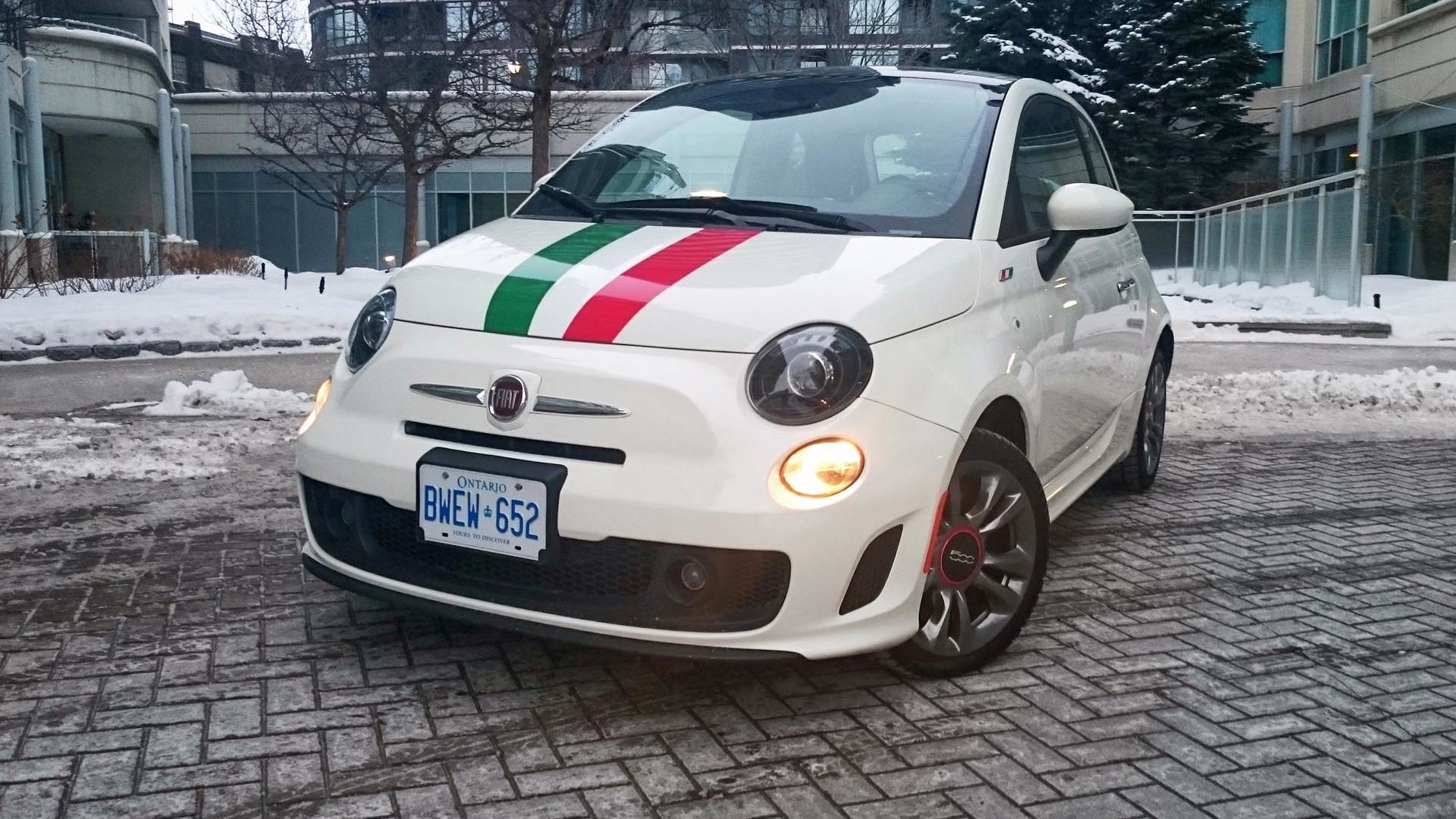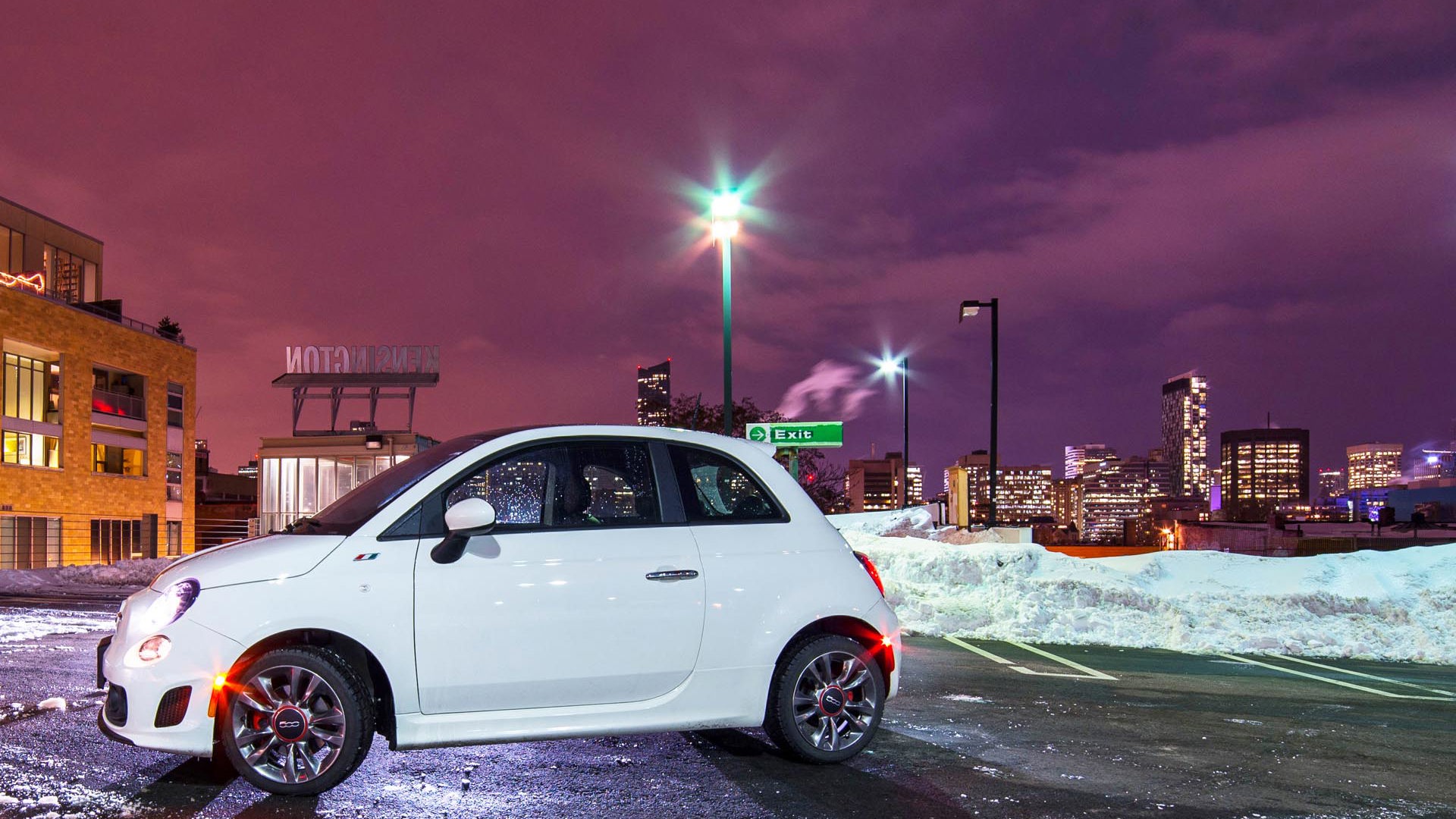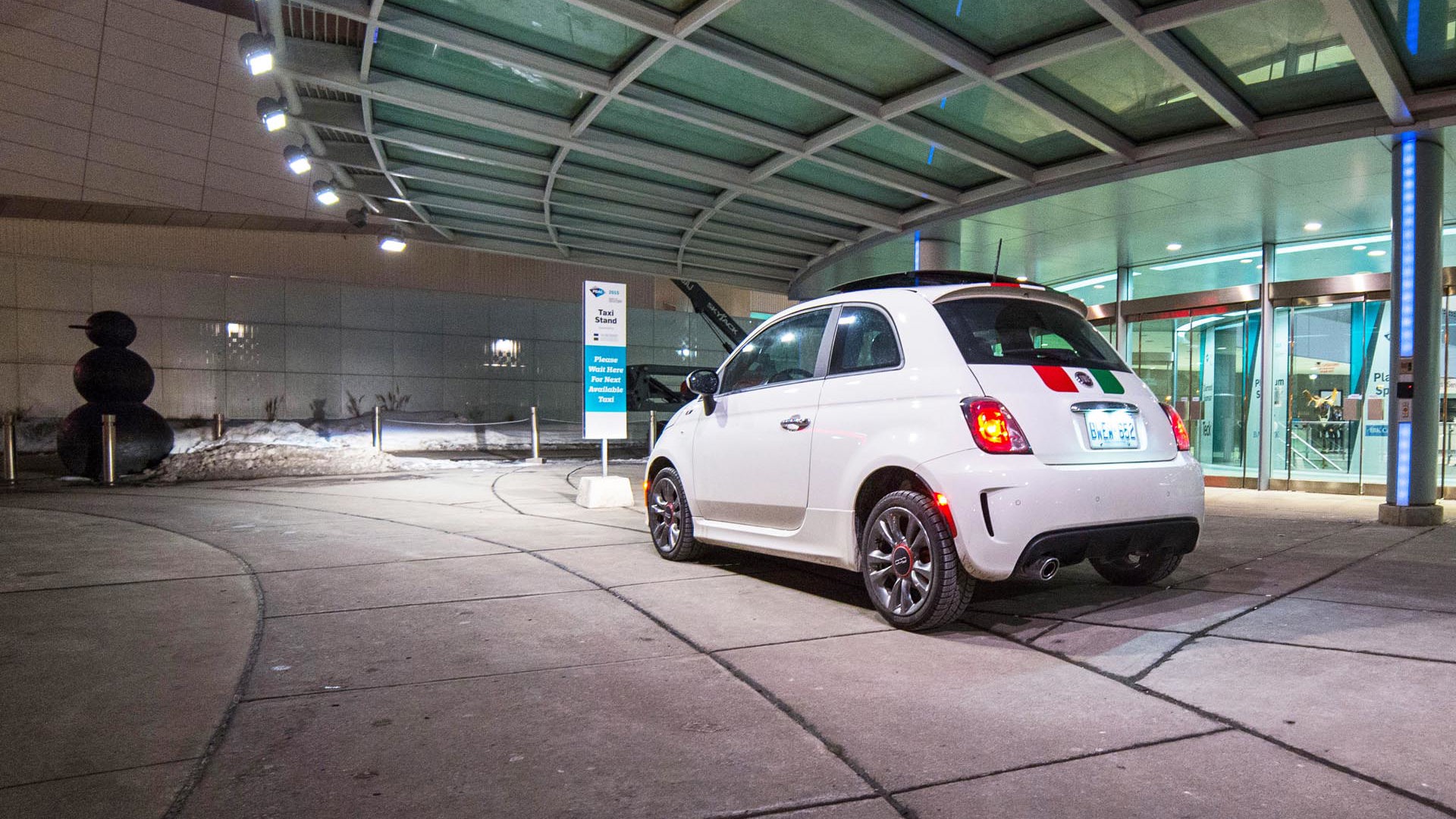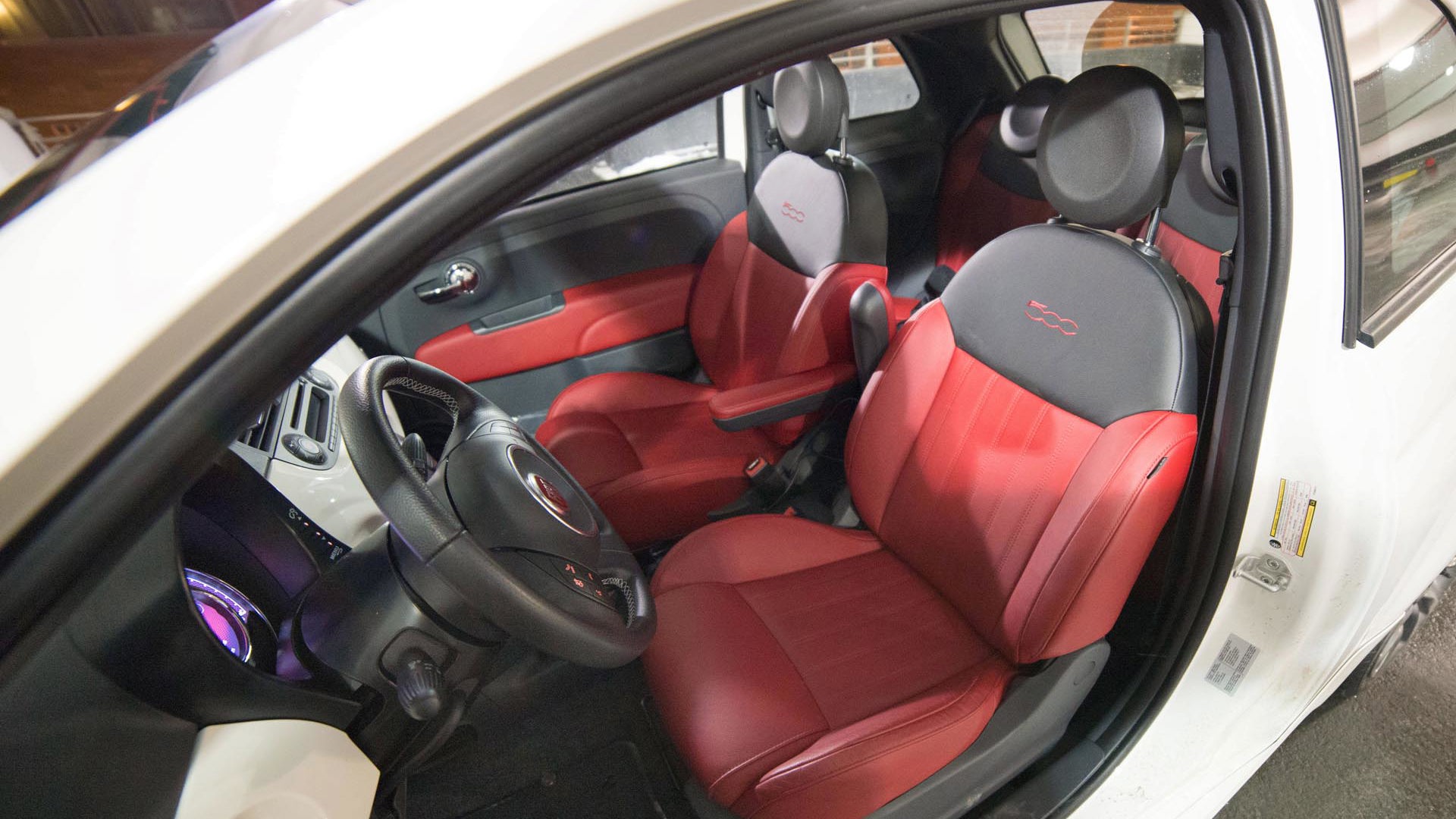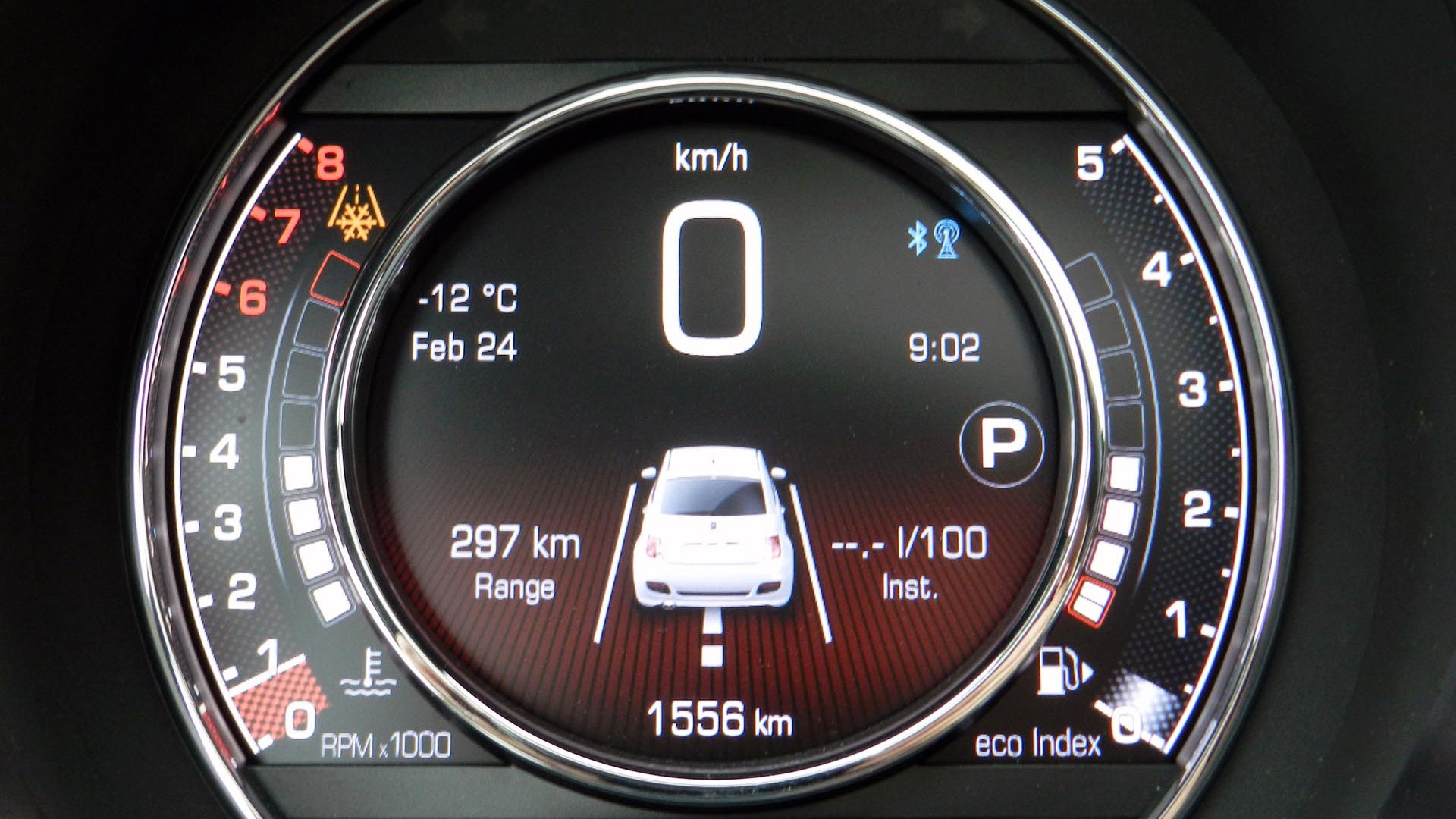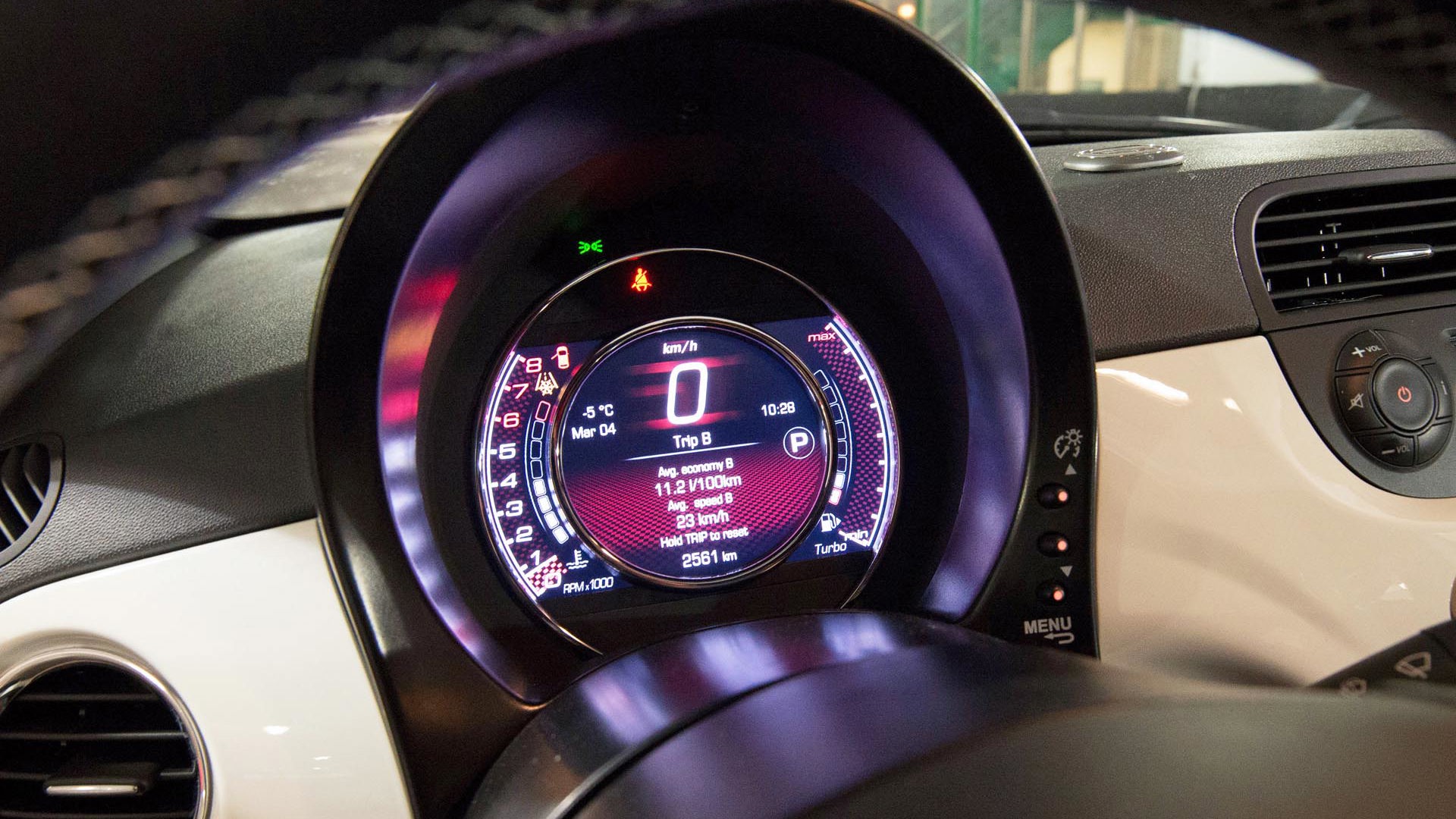 AutoTrader SCORE
AutoTrader SCORE
-
EXTERIOR STYLING10/10
-
INTERIOR8/10
-
COMFORT6/10
-
FUEL ECONOMY8/10
-
PERFORMANCE7/10
The mission was simple. Fiat-Chrysler’s Jeep division had a car we needed for a massive compact-crossover comparison test – the Jeep Cherokee. It was the only non-Trailhawk version in the fleet, and the only one that fit within our $35,000 price bracket. One catch: It was in Montreal. We are in Toronto.
Never fear! I had a plan. I was already booked in the Fiat 500 Turbo – the gorgeous little white buggy with the green and red stripes, red interior and the 1.4L MultiAir turbo. As soon as I’d seen it on fleet I knew I wanted to test it. I wasn’t able to participate in the comparo itself as I was on another launch event, but I could contribute.
The standard tranny is a five-speed manual but this tester was saddled with the six speed automatic which is also now available on the Abarth! Sacrilege!
And so I resolved to drive my little Fiat up the 401 to retrieve the Cherokee and return – all in one day. I’d leave the Fiat there, and do the same trip in reverse the following week. Too easy right?
I learned some things on that trip. For example – trying to get clean photos of your Fiat after five hours on the 401 is an exercise in pure futility. Also, snowy weather is hilarious fun when your car is small and nimble, even when FWD.
In the days on either side of the trip I learned some things too.
“Is that the Abarth?” – was the question of the week in the turbo. “No, this is not as hard-core as that one, and lacks the orgasmic exhaust note.”
The turbo is the same 1.4L “Multiair” turbo four as the Abarth, but not worked as hard. In this version it’s good for 135 hp and 150 lb-ft torque, but the whole kit and caboodle weighs just 1,124 kg. The result? A genuinely quick little hatch. Heck, it even has a g-force meter to measure its performance.
Well, sort of. I mean the g-force meter is real, but at around eight seconds 0-100 km/h the Fiat 500 isn’t blistering. It’s entertaining though, and will leave you feeling well satisfied shunting about town.
The standard tranny is a five-speed manual but this tester was saddled with the six speed automatic which is also now available on the Abarth! Sacrilege! I felt like the car’s character and sporty pretensions – especially with the glowing red instrument cluster upon a press of the “sport mode” button – really need the manual to bring out the enjoyment, but I also understand that many, many buyers feel differently.
Forward for down, back for up. Joy of joys!
This automatic doesn’t have paddle shifters, but there is a sequential mode, and joy of joys it’s actually set up correctly! Forward for down, back for up. Joy of joys! I used it in the most horrible weather to help slow the car and found it responsive if not lightning-quick. If you downshift early the car will give you the right gear at the right time, making the corner exit more fun and helping you engine brake.
Some say patience is a virtue, I disagree. So for me the upshifts were not up to par and I longed for the manual. By the time you de-clutch, shift and release though it’s unlikely I’m quicker than the automatic. If you’re less high-strung than me you might find it perfectly acceptable. The gears are well-spaced, however, for good mid-range poke when you need it, even when overtaking on the highways.
That aforementioned g-force meter inspired me to throw the little Fiat at some off-ramps. Holy body roll batman! Push it hard and the narrow track, tall body, soft springs and high centre of gravity as well as those super-tough little 6.5-inch wide tires combine to lean the car over hard on the outside– I wasn’t game to push much past 0.4 on the lateral g-loads recorded by the car. And that’s a shame because the steering is actually pretty precise with good feedback.
I liked the heft of it too. At one point on the 401 strong crosswinds were blowing everyone around in their lanes, the light 500 with its large surface area was struggling on the snow-blown tarmac and I could feel the car sliding about underneath me. By relaxing my fingers and being gentle with the tiller I was keeping well inside the lines (my pre-school teacher said I never would!) even as others were blowing right across the road and into the barrier, then back across and into the snow bank. I’m not joking, it happened right in front of me to one car. There was a trail of three damaged/buried/backwards-facing cars, one beached and rotated semi-trailer and an overturned SUV all within about 10 km of each other. As I was on the phone to my wife updating her on an old mate in the crashed Civic (he was fine, police arrived to take him to the hospital for a checkup), a ute with a trailer joined the highway at around 100 km/h. “He’s going too fa… oh…. [dear]…” the wind picked up the trailer and launched the car into a violent tank slapper. The driver saved it somehow and slowed down to about 60 after that.
The point? It was snowy, and windy, and treacherous, but the little Fiat soldiered on. Winter tires helped, but sure-footed suspension and communicative steering feedback helped me manage the small stretch of drama comfortably.
On the return journey, snow fell much heavier toward Toronto, but the wind was lighter and so conditions were less dangerous. Some back-road detours to test the handbrake highlighted the inherent benefits of a tiny, nimble platform and the lack of grip hid the body roll. Wiggling its bum around with gleeful abandon helped me prepare for the impending two-hour stop-start through the final 40 km before downtown Toronto. If only Fiat could drop the centre of gravity somehow.
One way would be to lower the driver’s seat. You don’t sit in the Fiat so much as on it, the seat is elevated high off the floor. It gives a great level of visibility but it’s a letdown given the sporty appearance. Nothing says “I am not a sports car” quite like a high seat.
On the subject of comfort, the Fiat 500 Turbo is a winner. I drove for six hours straight (I had to do some errands) and never once cramped, felt uncomfortable or needed to alter my position. I only needed to alter the steering wheel’s height, but if you need to telescope the column you’ll be out of luck – it only adjusts up and down.
The seats might be a vivid red that screams “uncomfortable positions” but the shape and padding is perfect for relaxation. To put it in perspective, I did the return in the larger Cherokee with bigger seats and more room, and felt both about on par in terms of seat comfort.
Of course, the Cherokee was much larger, and the Fiat is a truly tiny car. The back seat is impressively spacious given the Olaf-sized exterior, it’s still too small for adults and even too small realistically for a family with children.
And while it excelled in comfort and on-the-road performance in tricky conditions, the minuscule 40L fuel tank made for lousy range. I should say lousy worry-free range. The fuel light would come on at around 380 km into my trip each time, which would cause me to hit the next fuel station only to find the 500 drank just 27L of juice. I averaged 7.0 L/100 km which should be good for well over 500 km of range. The EPA by the way rates it at 7.6/5.9/6.9 L/100 km city/highway/combined.
The Fiat 500 is a city car for urban singles through and through.
The Fiat 500 will provide the sort of emotional connection and joy that makes Carly Rae Jepsen seem well-balanced.
Its charming retro looks carry through beautifully to the interior, and the incorporation of the large graphic information screen in the dash allows for a retro-style, clutter-free centre stack and radio head unit. The addition of UConnect’s brilliant back-of-steering wheel controls add excellent ergonomic value without impacting the design statement. I appreciated the way the gauge cluster changed in normal and sport modes with fuel economy ratings and a lighter colour for normal mode, and a digital tach and g-force meter in sport mode. It would be better if the g-force meter recorded your maximums, but then again that’s not what the car is about.
So what is it about?
Charm. The Fiat 500 is endearing in any trim, add the purposeful wheels, Italian-flag paint job and only-legal-in-Amsterdam red leather interior and the Fiat 500 Turbo is pure charisma. For those who appreciate those aspects the Fiat 500 will provide the sort of emotional connection and joy that makes Carly Rae Jepsen seem well-balanced.
I loved this Fiat so much I asked one of our colleagues who was in town briefly to take it out for a night and paint her portrait. Here Fiat mixes the right amount of nostalgia, aesthetic charm and just enough performance to grow its fan base and impress their friends. Think of a small child jumping a tricycle and you’ll understand how I feel about the Fiat 500 Turbo – I just want to pinch its little cheeks.
| Warranty: 3 years/60,000 km; 5 years/100,000 km powertrain; 3 years/unlimited distance corrosion perforation; 5 years/100,000 km 24-hour roadside assistance |
| Model Tested | 2015 Fiat 500 Turbo |
|---|---|
| Base Price | $21,395 |
| A/C Tax | $100 |
| Destination Fee | $1,695 |
| Price as Tested | $30,370 |
|
Optional Equipment
Red, leather-trimmed seats - $850, Comfort and Convenience Group (one year Sirius XM, heated front seats, ATC air-conditioning, alarm) - $795, six-speed automatic - $1,495, power sunroof - $1,200, seven-inch in-cluster display - $675, TomTom navigation - $495, Beats premium audio $995, 16x6.5-inch wheels - $300, rear park assist - $375.
|
|
